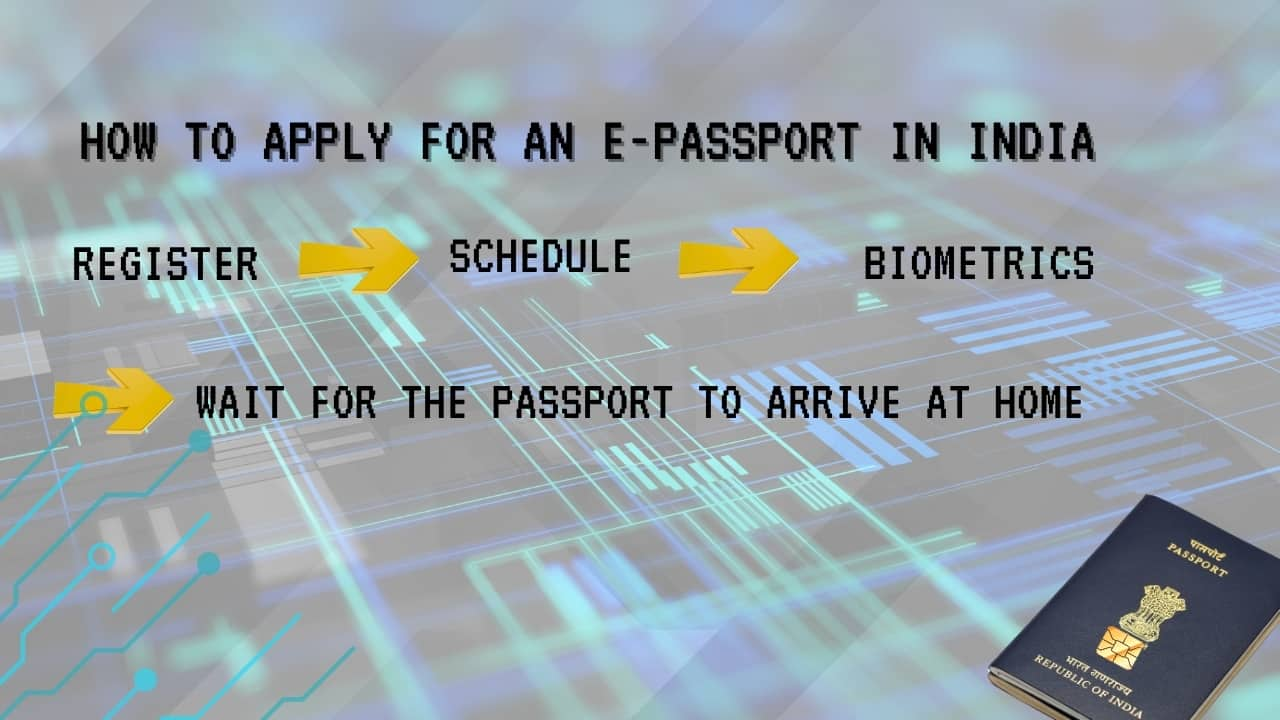



India has entered a new era of digital travel identity. After months of phased trials, the Ministry of External Affairs has now officially rolled out biometric e-passports across several cities, with plans to expand nationwide. The move is part of the broader Passport Seva Programme (PSP) 2.0, aiming to modernise the way Indians travel abroad by introducing smarter, safer, and faster systems.
So what exactly is an e-passport? How is it different from your regular passport? And should you get one right away?
Here’s a detailed look.
What is an e-Passport?
At first glance, the e-passport looks just like the regular dark blue booklet you already have. But inside the cover, embedded within a thick page, is a secure electronic chip that stores your biometric data— your face photo, fingerprints, and key personal details. These passports are compliant with ICAO (International Civil Aviation Organisation) standards, which means they are globally accepted and can be read at e-gates and smart immigration counters in over 120 countries. The chip uses Public Key Infrastructure (PKI) encryption to prevent data theft or tampering — a feature missing from traditional passports.
Why India Is Making the Shift
Security is the biggest motivator. With increasing cases of identity theft and document forgery worldwide, biometric passports make it much harder to clone or misuse someone's identity. Equally important is efficiency. At airports, e-passports can be scanned using contactless readers. This reduces wait time at immigration counters — especially at busy international hubs. The upgrade also positions India in line with global digital travel practices, putting it alongside countries like the US, UK, Germany, Singapore, and others already using biometric passport tech.
 How to Apply for an e-Passport
How to Apply for an e-Passport
How to Apply for an e-Passport
The process is mostly the same as applying for a regular passport:
1. Visit the official Passport Seva portal.
2. Create an account or log in.
3. Fill out the application form for a new passport or renewal.
4. Schedule an appointment at your nearest Passport Seva Kendra.
5. Submit biometrics (photo + fingerprints) during the visit.
6. Your e-passport will be printed with the chip embedded and delivered to your registered address.
You can also apply through Post Office PSKs or mobile passport vans in selected regions.
Is Your Current Passport Still Valid?
Yes. If your existing passport is valid, you do not need to rush and get a new e-passport. The government has made it clear that traditional passports will remain fully valid until their expiry date.
With the launch of Indian e-passports, travellers can now expect a much smoother and safer experience. The built-in chip allows for contactless scanning, which speeds up immigration checks significantly. Security is also enhanced, as the embedded biometric data is protected using PKI encryption, making it difficult to forge or tamper with. Since these passports meet international standards, they are accepted globally, allowing for easier movement across borders. Visually, they can be identified by a golden chip symbol on the cover, marking the shift towards a more digital and secure travel document.
Discover the latest Business News, Sensex, and Nifty updates. Obtain Personal Finance insights, tax queries, and expert opinions on Moneycontrol or download the Moneycontrol App to stay updated!
Find the best of Al News in one place, specially curated for you every weekend.
Stay on top of the latest tech trends and biggest startup news.